If you’ve been to Alaska during the warmer months, you’ll know that it’s humming with insects in the first half of summer, and dripping with berries in the second.
This makes it an ideal migratory ground for a wide variety of breeding sparrows who can cash in on the bountiful food supplies during the warmer months.
But you might be surprised to learn that some sparrows remain here for the entire year too. The milder parts of the state south of Anchorage offer a coastal refuge for individuals who’d prefer to stay in one place than make the long flight down south!
Some of these sparrows can be attracted to backyard bird feeders during the winter months, meaning whatever the time of the year, you have a good chance of spotting some sparrows in Alaska!
Here are 10 sparrow species that bird watchers could see at some time of the year, in some parts of Alaska. If you live here, maybe you could try to spot them all?
Dark-eyed Junco
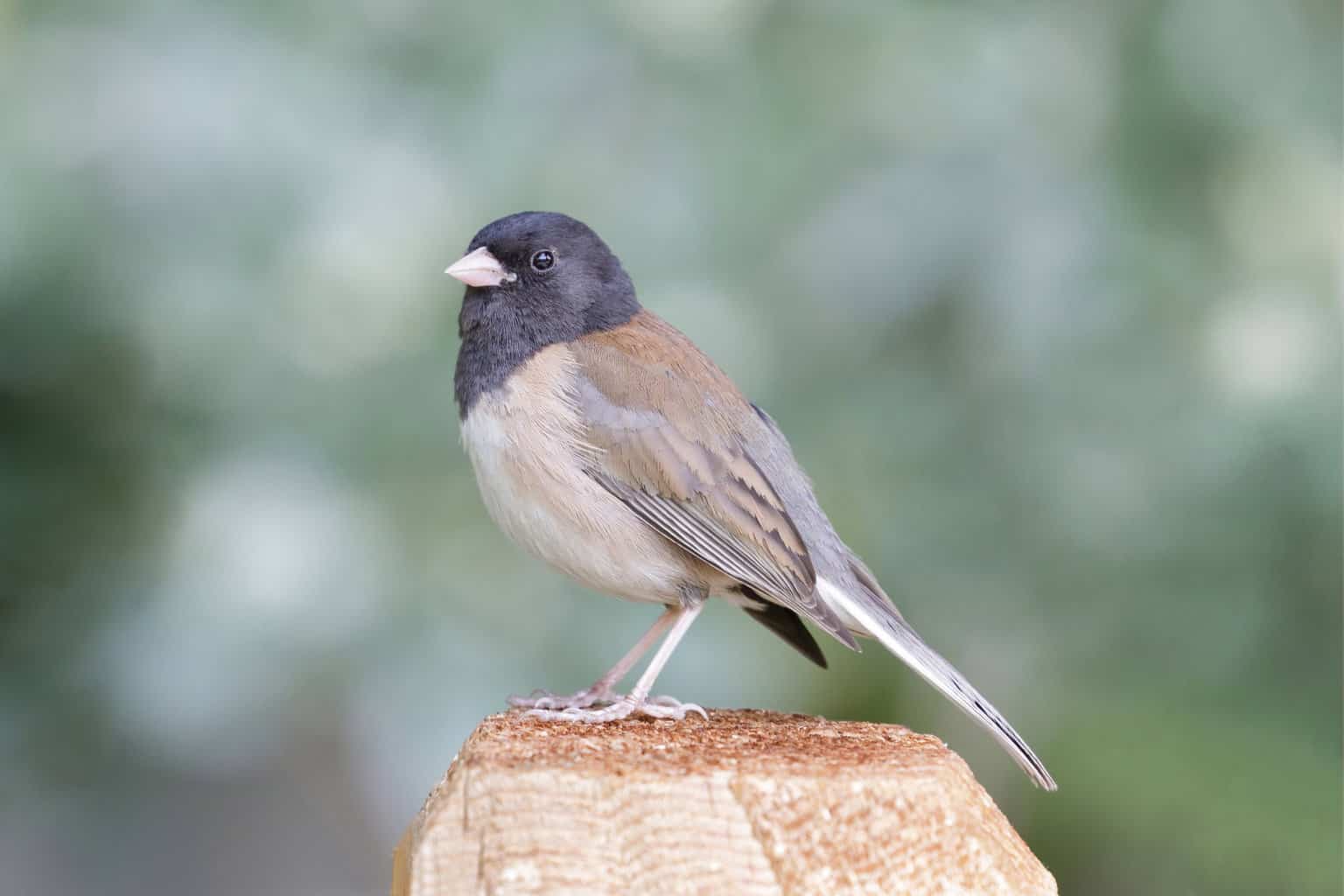
- Scientific Name: Junco hyemalis
- Length: 5.5-6.3 in (14-16 cm)
- Weight: 0.6-1.1 oz (18-30 g)
- Wingspan: 7.1-9.8 in (18-25 cm)
Although not everyone would think of juncos as sparrows, they are in fact part of the New World sparrow family, so rightfully deserve a place on our list!
They’re the most frequently seen sparrow species in Alaska, and that’s partly because they remain here in large numbers over the entire year. While most sparrows are chiefly migratory visitors, these hardy juncos congregate in large numbers in the southwest of the state during winter too.
During the winter months, you can attract these ‘snow birds’ to your backyard by offering them peanuts, cracked corn, and millet from your bird feeder.
Savannah Sparrow
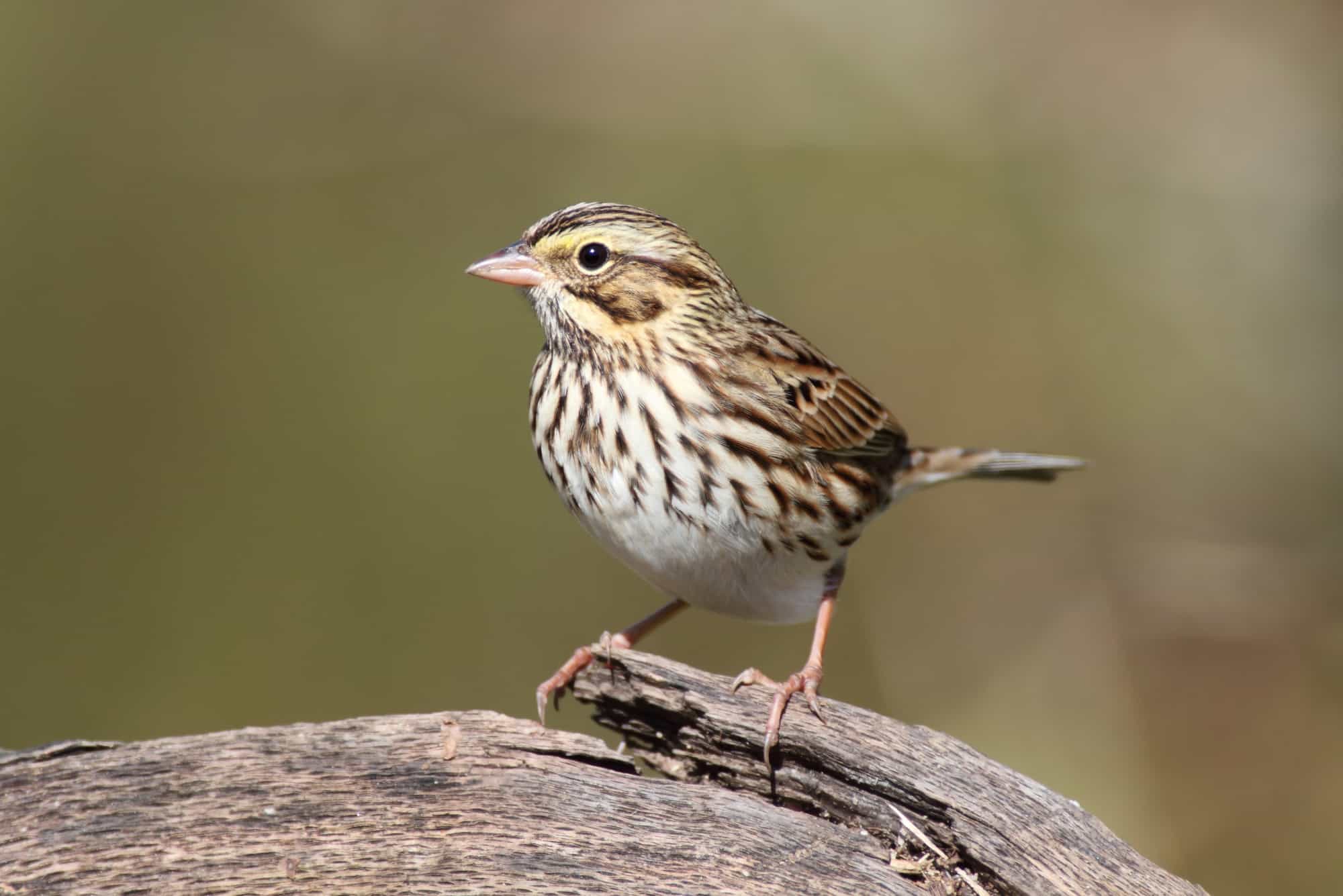
- Scientific Name: Passerculus sandwichensis
- Length: 4.3-5.9 in (11-15 cm)
- Weight: 0.5-1.0 oz (15-28 g)
- Wingspan: 7.9-8.7 in (20-22 cm)
Savannah sparrows are the most commonly seen species of sparrow in Alaska during the breeding season. From April to November, large numbers of them nest on the ground in grassy areas, with only a few remaining to spend winter in the milder parts of Alaska too.
As their name suggests, these medium-sized sparrows prefer life out in the meadows hunting for insects than visiting human habitation. Their nests are built on the ground out of the grass.
White-crowned Sparrow
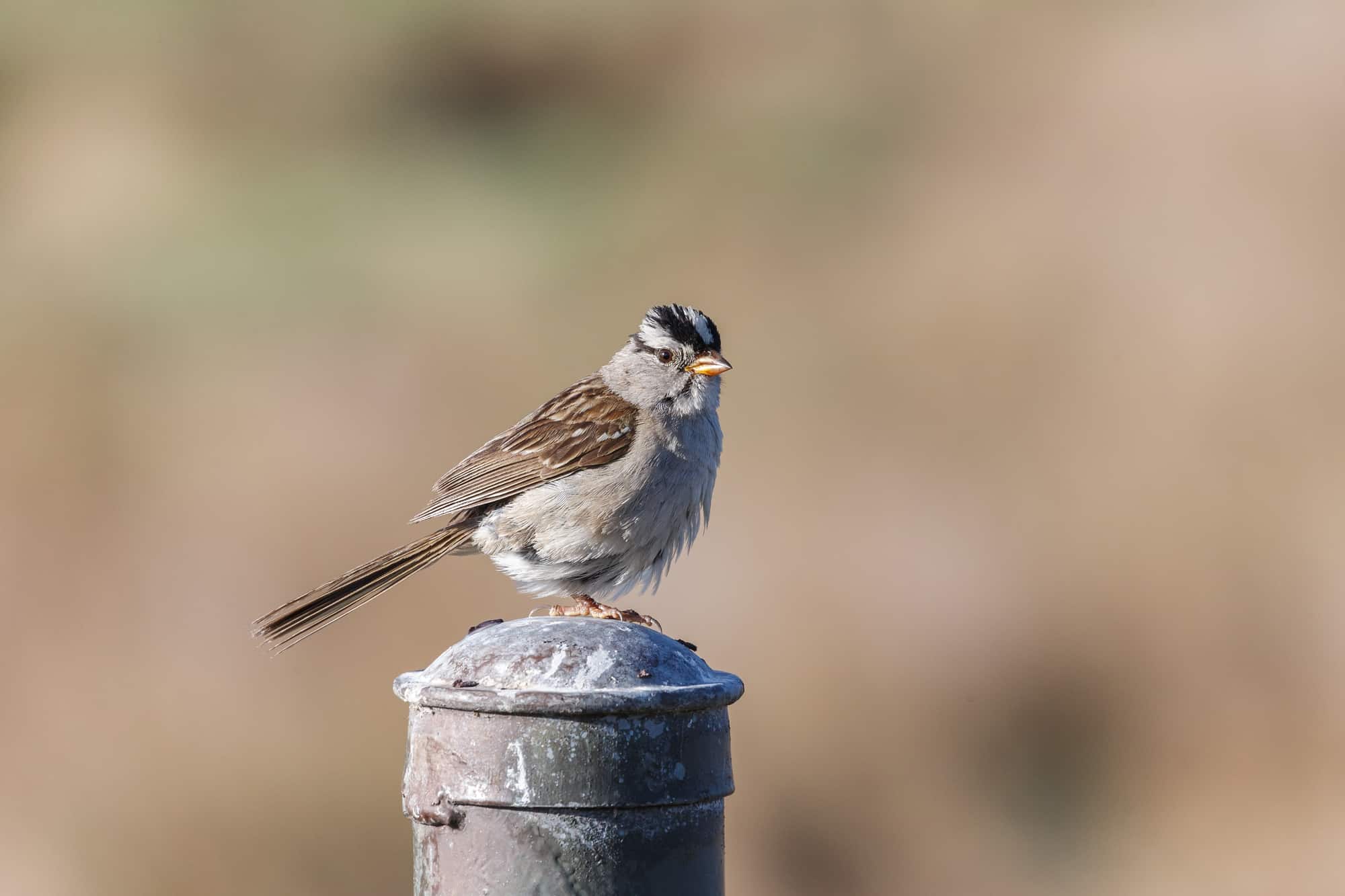
- Scientific Name: Zonotrichia leucophrys
- Length: 5.9-6.3 in (15-16 cm)
- Weight: 0.9-1.0 oz (25-28 g)
- Wingspan: 8.3-9.4 in (21-24 cm)
White-crowned sparrows are one of the easier sparrows to identify because of their distinctive black and white striped head and the yellowish colors of their bill. These beautiful birds are mainly migratory visitors in Alaska, but a few will remain in milder coastal areas in winter too.
In these regions, it’s possible to attract the white-crowned sparrow to your backyard bird feeders by offering them black oil sunflower seeds and other grains. A bird bath will offer these lively birds a place to wash, too.
Fox Sparrow

- Scientific Name: Passerella iliaca
- Length: 5.9-7.5 in (15-19 cm)
- Weight: 0.9-1.6 oz (26-44 g)
- Wingspan: 10.5-11.4 in (26.7-29 cm)
Fox sparrows appear almost more like small thrushes than sparrows. With a wingspan of almost a foot across and a speckled chest, you might not imagine them as part of the sparrow family at all!
Most fox sparrows are simply summer migrants in Alaska but small populations can still be found around Anchorage and the southern part of the coastline in the winter as well.
Perhaps their populations are sustained by backyard bird feeders, and the wider variety of fruiting shrubs found near human habitation.
Lincoln’s Sparrow
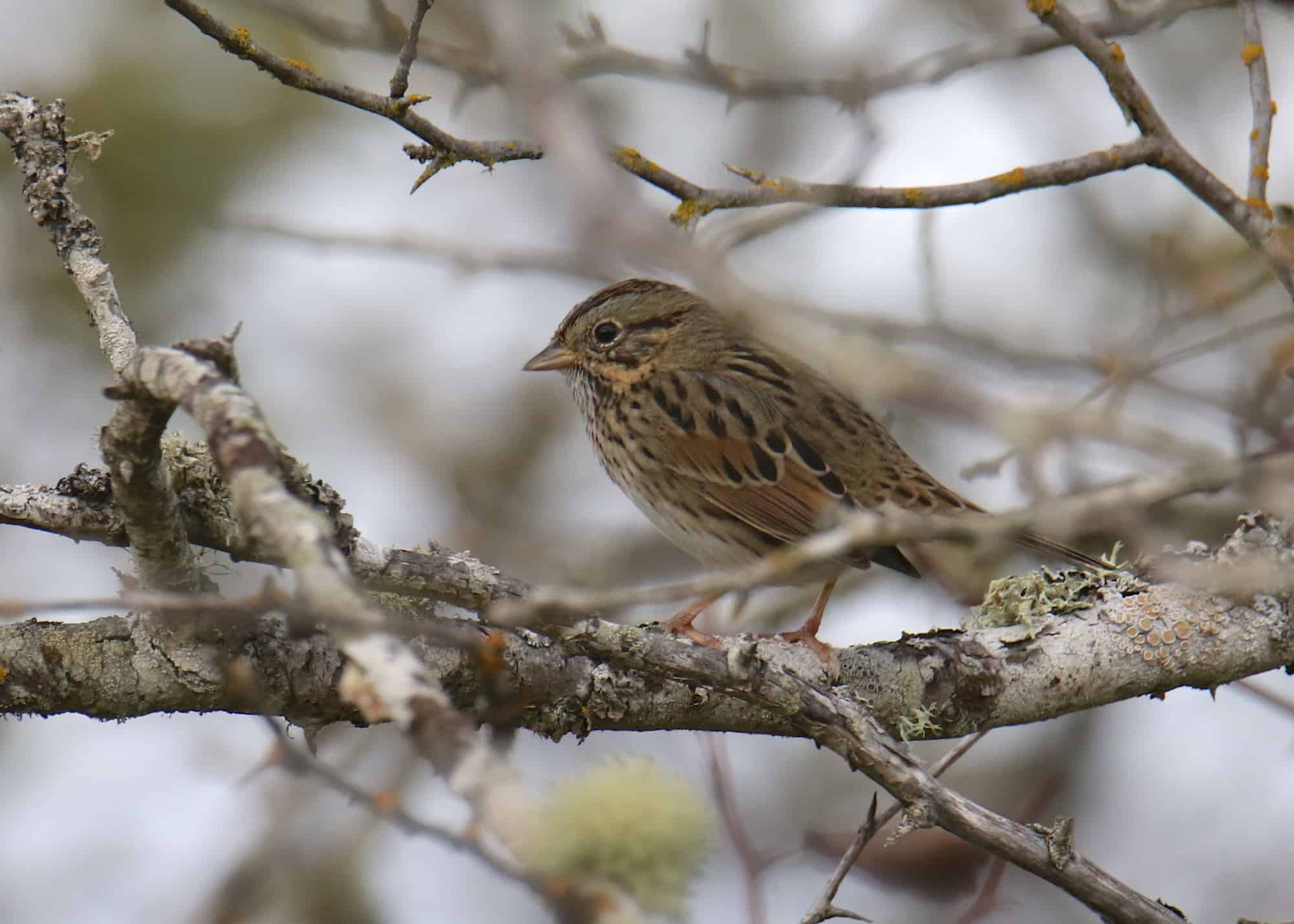
- Scientific Name: Melospiza lincolnii
- Length: 5.1-5.9 in (13-15 cm)
- Weight: 0.6-0.7 oz (17-19 g)
- Wingspan: 7.5-8.7 in (19-22 cm)
Lincoln’s sparrows are normally seen during the breeding season between May-September in Alaska, but they can occasionally be spotted in mild regions during the winter months too.
These shy birds are not always the easiest to spot, but their sweet, distinctive song is a great way to locate and identify them. They nest in thick shrubs, using grass and moss as their main nesting materials.
Song Sparrow

- Scientific Name: Melospiza melodia
- Length: 4.7-6.7 in (12-17 cm)
- Weight: 0.4-1.9 oz (12-53 g)
- Wingspan: 7.1-9.4 in (18-24 cm)
Song sparrows are one of the noisiest of all sparrows, especially during the spring and early summer months when they’ll sing persistently for long hours of the day.
While this species of bird is migratory in most of Canada, its populations remain fairly stable throughout the year along the mild southwest coastline of Alaska.
These birds have a wide-ranging diet, and can enjoy eating their favorite seeds from a bird feeder in the winter months as much as they love eating worms and a variety of insects during the summer!
Golden-crowned Sparrow
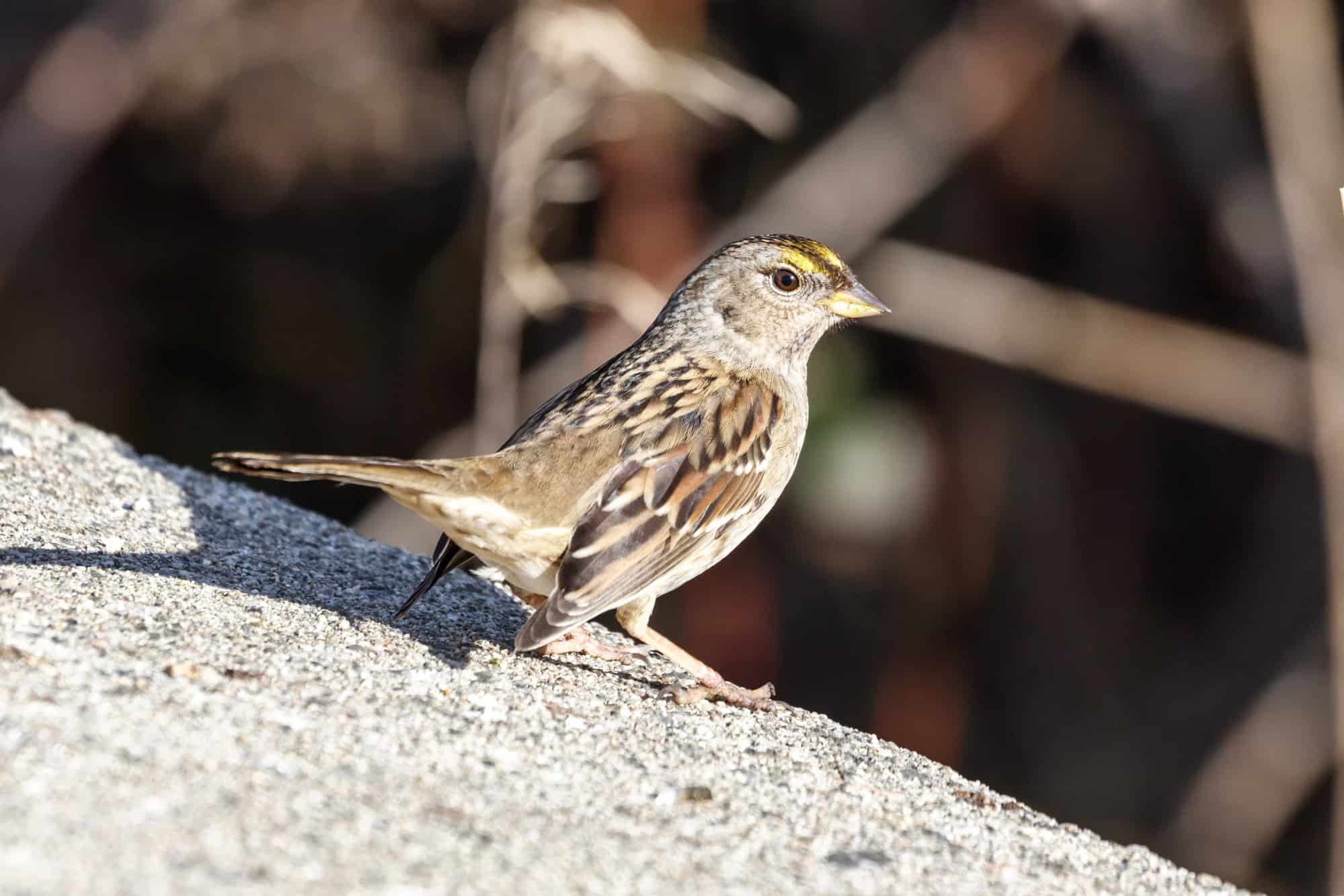
- Scientific Name: Zonotrichia atricapilla
- Length: 5.9-7.1 in (15-18 cm)
- Weight: 1.1-1.2 oz (30-33 g)
- Wingspan: 9.74 inches
A large, and striking sparrow, the golden-crowned sparrow’s name is perfectly descriptive of its appearance. The bright yellow streak running across this bird’s black forehead makes them immediately recognizable.
The Golden-crowned sparrow population is confined to the west coast of the continent, all the way from its breeding grounds in Alaska, to its wintering habitat in California.
A few do stick around for winter, but you’re much more likely to see this bird here during the warmer months, from May to September.
American Tree Sparrow
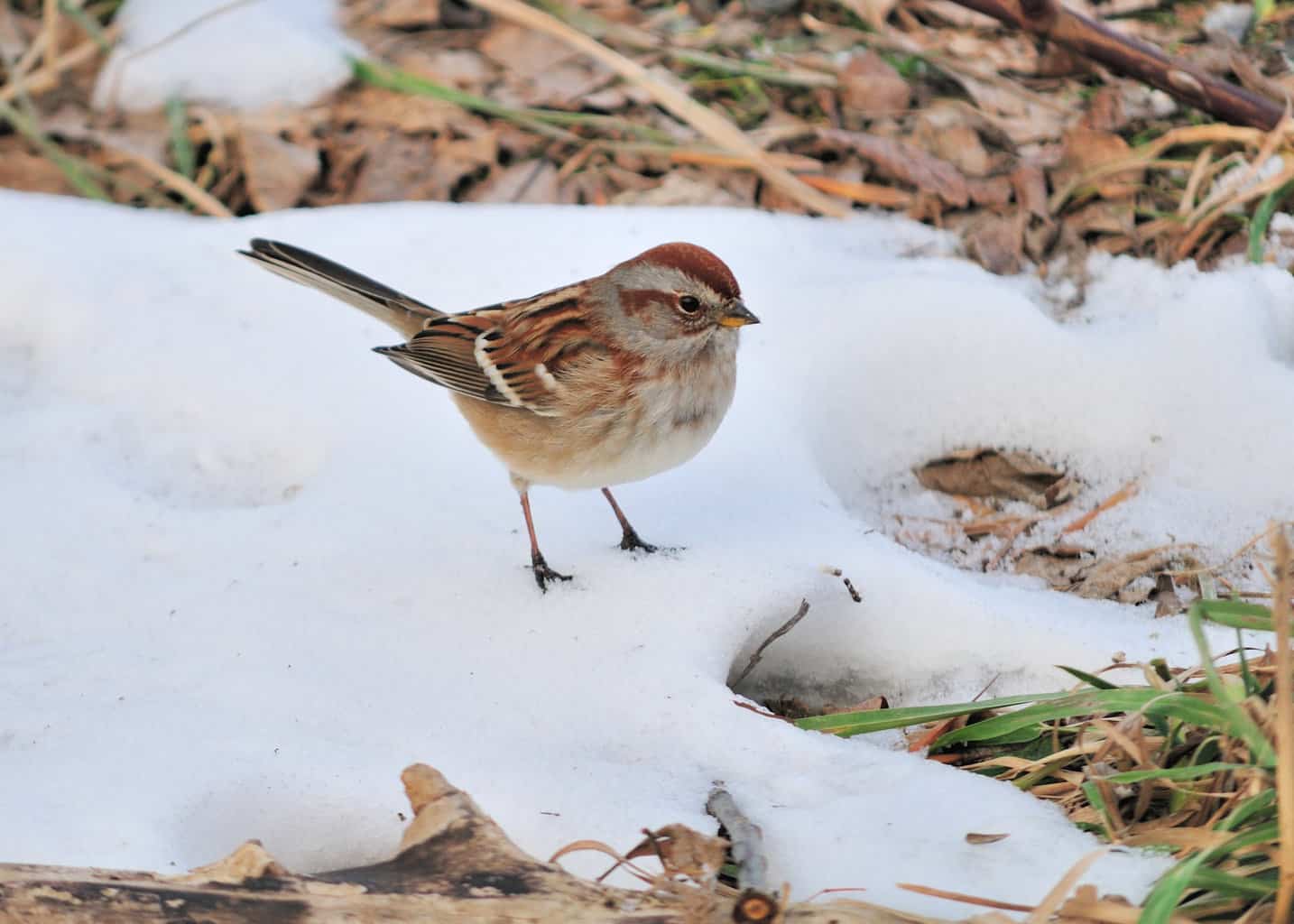
- Scientific Name: Spizelloides arborea
- Length: 5.5 in (14 cm)
- Weight: 0.5-1.0 oz (13-28 g)
- Wingspan: 9.4 in (24 cm)
This is a cute-looking, medium-sized sparrow with a long tail. You’re about twice as likely to see these birds in Alaska during the summer as in the winter.
But the American tree sparrow’s name is not consistent with its habitat! These birds much prefer to spend their time foraging on the ground rather than perching in trees, and they even build their nests on the ground too!
It was the European settlers who mistakenly named this bird after their native tree sparrows, which were more true to their name.
In winter, these birds may be lured in by backyard feeders, where they do a great job of cleaning up the leftovers on the ground left behind by other birds.
Chipping Sparrow
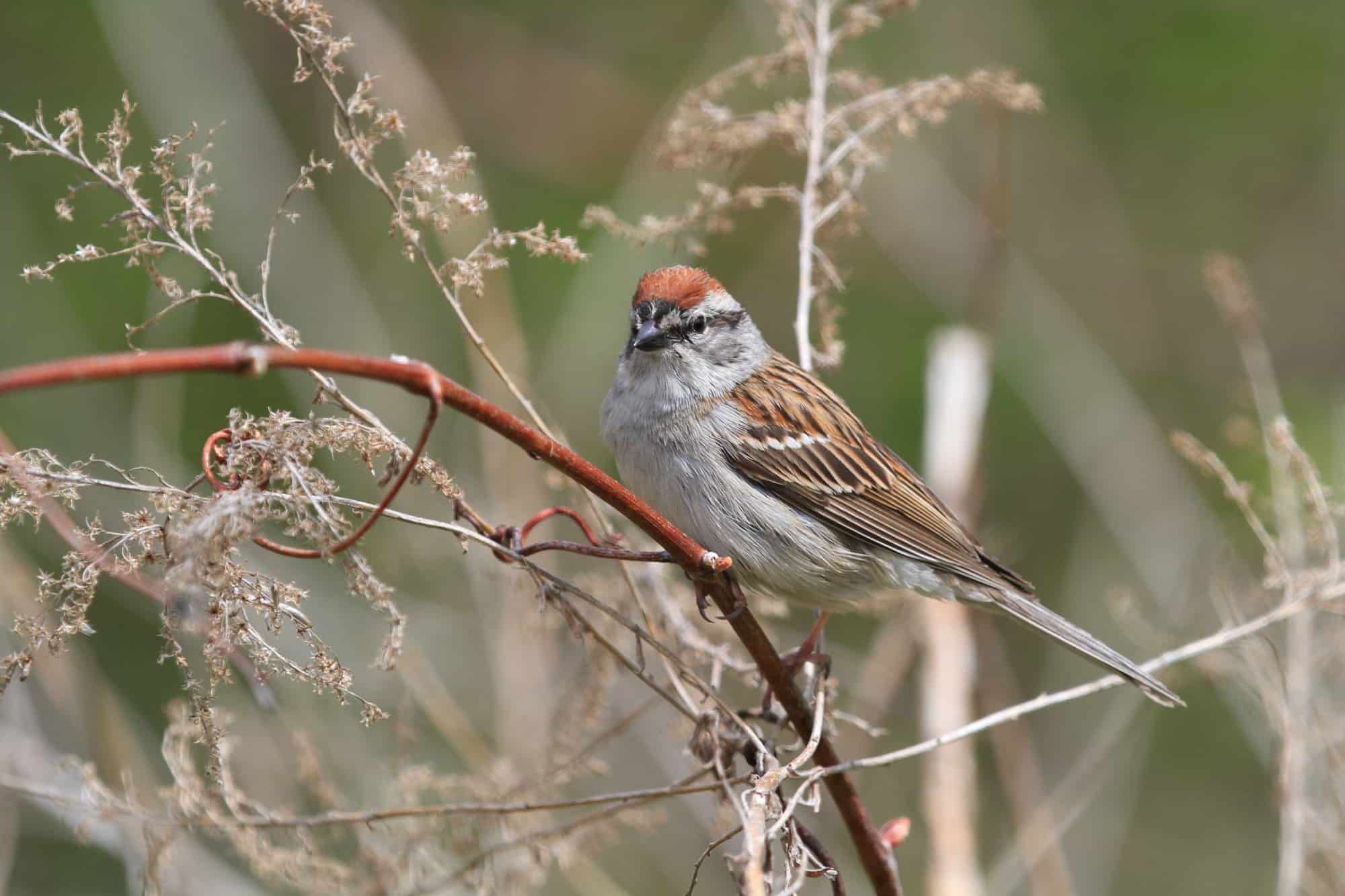
- Scientific Name: Spizella passerina
- Length: 4.7-5.9 in (12-15 cm)
- Weight: 0.4-0.6 oz (11-16 g)
- Wingspan: 8.3 in (21 cm)
Chipping sparrows are so-called after their song. But rather than a simple ‘chip-chip’ their song is more of a distinctive, high-pitched warbling trill – a great way to identify these birds that are a prized sighting in Alaska!
Since this bird’s nesting range only extends up to Fairbanks and Fort Yukon, you’re very unlikely to see them elsewhere in the state.
In winter, they’re long gone, preferring to spend their time instead in Central America and the southernmost United States.
Brewer’s Sparrow
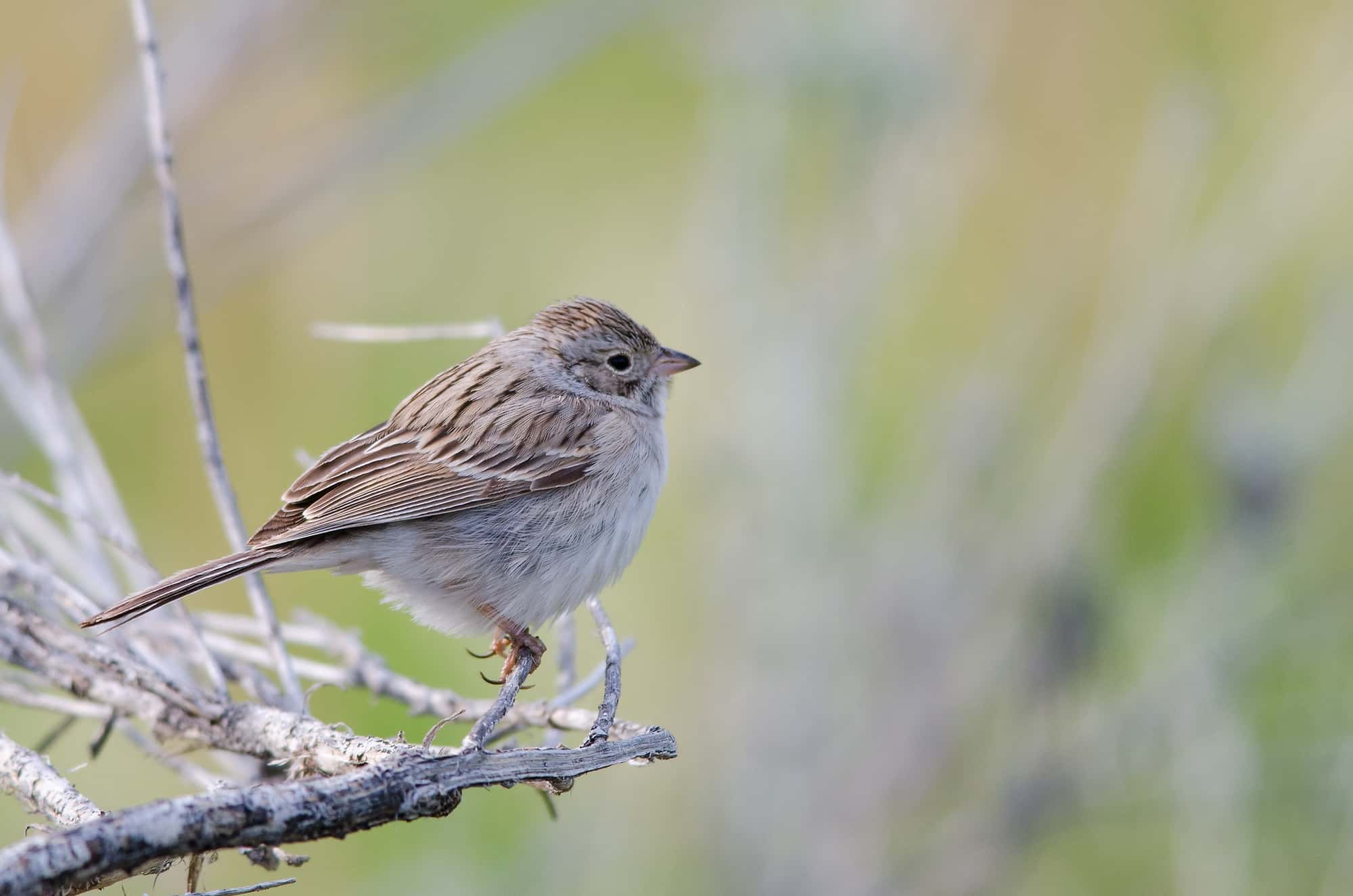
- Scientific Name: Spizella breweri
- Length: 5.1-5.9 in (13-15 cm)
- Weight: 0.4-0.5 oz (11-14 g)
- Wingspan: 7.1-7.9 in (18-20 cm)
The Brewer’s Sparrow is the smallest sparrow in Alaska, and also the rarest.
These birds only inhabit very small areas of brush near the Canadian border during the summer, so they make a very rare sighting in Alaska, to say the least. They overwinter in the Southwest United States and Central America.
What makes it even harder to spot one of these birds is that they’re so difficult to identify by sight. As a ubiquitous brown bird without a field mark, its most distinctive feature is simply its tiny size.
You might have more luck identifying them by their song though, which consists of long, intricate trills.
Conclusion
For such small birds, it’s impressive how many sparrows make the long flight up to Alaska to breed every summer, and it’s not surprising that a few of them decide to stay for the winter, too!
Whether you’re enjoying dark-eyed juncos pecking at your bird feeder in Anchorage, or trying to catch a glimpse of the smallest sparrow in Alaska in the east, it can be great fun getting to know these lively birds.
Every year, the untamed wilderness of Alaska draws in birdwatchers and nature lovers from around the world. Whether you’re planning a trip to Alaska or are a long-term resident here, everyone will find out something interesting in our guide to Alaskan birds.

